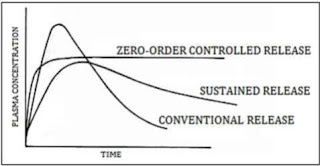Law of Mass action
Law
of Mass action
In 1864, scientists Gulberg and Wage provided the law of mass action.
Law of Mass Action
A+B ------- Product
Rate α [A] x [B]
Rate = K x [A] x [B]
That is,
A+B=CD
K1[A]x[B]= K2[C]x[D]
K1/K2=[C]x[D]/[A]x[B]
K=[C]x[D]/[A]x[B] { K1/K2 = K}
K is the rate constant
But if the reaction is like that,
3A + 2B ------ Product
However, according to the formula of mass, the mole numbers will become the power of the product.
A + 2B ------ Product
Rate α [A] x [B]
Rate = K x [A] ³ x [B]
But theoretically it is not always possible. Because Rate Low is the relationship between the density of the reactant and the rate of the reaction. This is only possible by the experimental results.
Such as:
2NO2 (g) + F2(g)= 2NO2F(g)
This reaction was supposed to be as follows:
Rate=K x [NO2]² +[F2]
But the tested results do not happen. If we check, we will get
Rate=K x [NO2] +[F2]




Comments
Post a Comment
Thanks